MARY THOMASSBOOK OFKNITTINGPATTERNS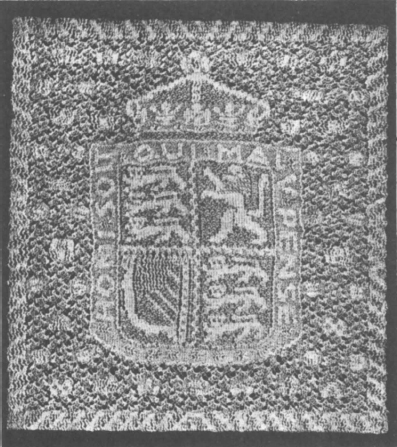 HERALDIC KNITTING An exquisite example of modern knitting, in fine linen thread, by Paula Granichstadten; showing how variety of stitch, correctly chosen, and thoughtfully designed, can be used to express form of the most complicated nature.
HERALDIC KNITTING An exquisite example of modern knitting, in fine linen thread, by Paula Granichstadten; showing how variety of stitch, correctly chosen, and thoughtfully designed, can be used to express form of the most complicated nature. 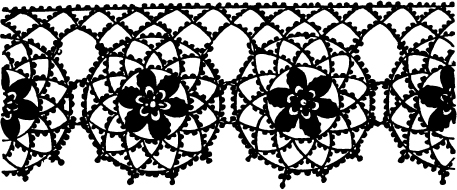 MARY THOMASS BOOK OF KNITTING PATTERNS DOVER PUBLICATIONS, INC. NEW YORK Bibliographical Note This Dover edition, first published in 1972, is an unabridged republication of the work originally published in 1943 by Hodder and Stoughton, Ltd., London. It is reprinted by special arrangement with Hodder and Stoughton, Ltd., Warwick Lane, London, E.C.4. International Standard Book NumberISBN-13: 978-0-486-22818-1ISBN-10: 0-486-22818-5Library of Congress Catalog Card Number: 72-188246 Manufactured in the United States by Courier Corporation 22818517 www.doverpublications.com DEDICATED WITH LOVE TO MY CHILDREN GAVRELLE AND RICHARD PREFACE The best periods of Knitting have always occurred when yarns have been scarce or expensive, as the desire for better knowledge of the work is stimulated in order that yarn need not be unduly wasted. The urge to knit is satisfied by making a careful collection of stitches and patterns knitted in Sampler form; and since every work, past-time or hobby must first begin with a collection, so that comparison and selection can be intelligently made, there is no more opportune moment than the present in which to begin this work.
MARY THOMASS BOOK OF KNITTING PATTERNS DOVER PUBLICATIONS, INC. NEW YORK Bibliographical Note This Dover edition, first published in 1972, is an unabridged republication of the work originally published in 1943 by Hodder and Stoughton, Ltd., London. It is reprinted by special arrangement with Hodder and Stoughton, Ltd., Warwick Lane, London, E.C.4. International Standard Book NumberISBN-13: 978-0-486-22818-1ISBN-10: 0-486-22818-5Library of Congress Catalog Card Number: 72-188246 Manufactured in the United States by Courier Corporation 22818517 www.doverpublications.com DEDICATED WITH LOVE TO MY CHILDREN GAVRELLE AND RICHARD PREFACE The best periods of Knitting have always occurred when yarns have been scarce or expensive, as the desire for better knowledge of the work is stimulated in order that yarn need not be unduly wasted. The urge to knit is satisfied by making a careful collection of stitches and patterns knitted in Sampler form; and since every work, past-time or hobby must first begin with a collection, so that comparison and selection can be intelligently made, there is no more opportune moment than the present in which to begin this work.
The illustrations in this book are arranged to present a progressive, pictorial story of knitted patterns, to be first enjoyed by turning the pages and watching the designs grow from simple to greater elaboration. This sensible arrangement serves not only as a story, but as a demonstration of the orderly and scientific methods on which knitting patterns are planned. Science as applied to knitting puts things in order, and inspires confidence. It does not elaborate, but simplifies the knowledge of knitting. It shows how a pattern is created, and so how it can be elaborated, simplified, or adapted as circumstances require. Such knowledge will greatly elucidate all written directions, and encourage the personal touch, which always adds to the pleasure of knitting.
Each chapter introduces a new motif of design, and the order of the book shows that knitting patterns are first composed of stitches and then stitches and motifs. As each motif can be grouped in a hundred different ways, and then allied to a second or third and grouped in hundreds of other different ways, there can be no possible end to knitting patterns, any more than there can be an end to melody created on the seven notes of the scale. The scope is endless, and this world of fabric lies at the fingertips for every knitter to enjoy. All knitting patterns are first planned out on squared paper, in just the same way as Weaving or Embroidery patterns. In fact, in the days of the Guilds there must have been great interchange of designs between workers of all the various applied arts, as each could use the same design with different effect because of different technique. In this way inspirations for knitting patterns could surround us on fabrics, walls, silver or china.
Approaching the work from this angle and noting the old technical, stitch and pattern names, it has been possible to rebuild the old methods of designing knitting patterns such as were known centuries before written descriptions did away with charts, and so the habit of seeing design on paper. Our ancestors could design on paper and with scientific knowledge long before they could write. Indeed, some of the early written recipes now make very curious reading, and these are comparatively late, about early 19th century. Knitting has a long, sweet, home history, and brief references to this give much of reading interest in the different chapters. The student should read this book with yarn and needles handy, and test out the different patterns and suggestions as they are described. Any odd scraps of yarn can be used for this purpose, and the lessons learnt will save much valuable time and yarn in the future.
After completing a few stitches or a row, the work should be examined so that the visual effect of the technique is appreciated. By this means it becomes possible to recognise at a glance how any fabric is created; moreover, it will also develop a love and knowledge of the work which can be gained in no other way. The knitter will quickly see how a vertical order of units (stitches or ornamental motifs) will result in a fabric having a width-wise stretch, while the same stitches or motifs in horizontal order will result in a fabric with a depth wise stretch. With this knowledge the designer will choose fabrics and arrange the units in design to obtain their best possible use, not only for their decorative value, but also for their practical value, so that the smartest shapes and style lines can be acquired. This intimate knowledge of stitch has other practical uses, as it enables one to look at the illustrations of knitted garments, etc., published in printed leaflets and magazines, and so to visualise beforehand how these garments will suit any particular figure, and thus avoid the disappointment of knitting-up a garment which might prove unbecoming. All written directions are general, of necessity, like ready-made garments, and unless the figure is Stock Size, some adjustment is always necessary, so the advice to cut and keep your own Master Pattern, and check the size and shape of a garment as the work progresses, is a sensible and economical plan.
Yet another helpful suggestion is to make a Knitted Sampler of all the different recipes given in each chapter. A separate sampler for each chapter, which should then be labelled. A family group of stitches recorded in this way will provide a reference of great value when seeking different fabrics or effects for designing garments. The sampler could be about 20 stitches wide, and each different pattern about 12 rows in depth. Before changing from one pattern to the next, knit 2 rows of Garter Stitch, so that each specimen is separate and easily recognisable. Many knitted samplers of rare beauty are shown in this book, and these should serve to inspire the modern student.
A sampler has a dual value. It is a record and also a means of learning a new stitch. For those who desire a reference book only, without considering the ways and origin of design, each pattern is independently described, so that all can take just what they want and how they want. Also any pattern or stitch can be found immediately under its own name by referring to the index, and when the name is unknown, by its principle of techniqueSlip, Cross, Eyelet, etc.given at the top of each page. In addition to showing the methods of creating each stitch or pattern, little sketches are shown throughout the book suggesting appropriate use of special fabrics or motif for garment use. Two chapters, contrasting the old and modern methods of making knitted garments, are given, so that the difference between the two can be compared and appreciated.
The fact is often overlooked that a knitter in making a garment, or any article for that matter, is really doing two things at the same time: 1. Making a garment. (A dressmakers job.) 2. Making a fabric. (A weavers job.) It is this which makes it so necessary to consider each job separately. First shape, then fabric, and afterwards unite them in the simplest possible way.
To do this it is essential to know how each fabric is designed, so that several patterns can be successfully amalgamated in pleasing effect. The designing charts will aid in this objective, but the greatest inspiration will be found in the order of the book, and the arrangement of the different repeating motifs in family groups presented under their own headings of Crossed, Slip, Ladder, Eyelet, Faggot, etc. In this way two or more members of the same family can be selected and blended successfully. (See, for example, , which is composed entirely of patterns chosen from the Crossed Motif family). A second or third attempt at designing will permit of greater adventure, and the uniting of different family groups. For this purpose the broader classification of fabrics and motifs in Vertical and Horizontal will be found useful.
Next page
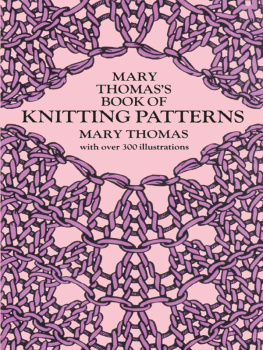
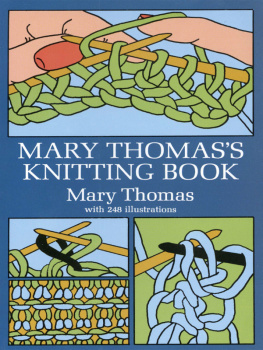

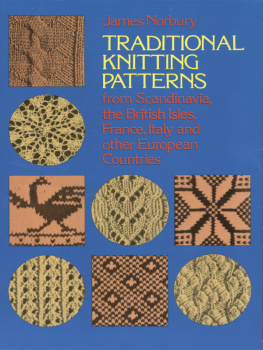
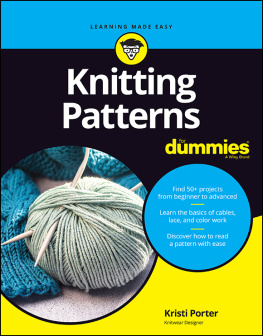
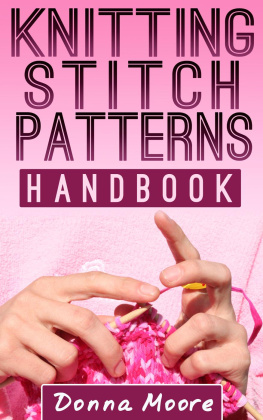
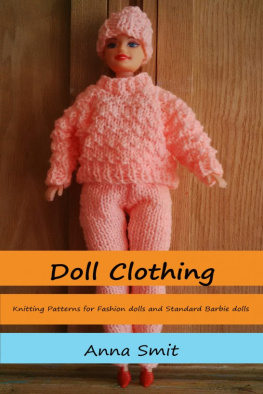
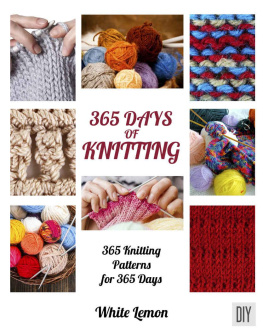
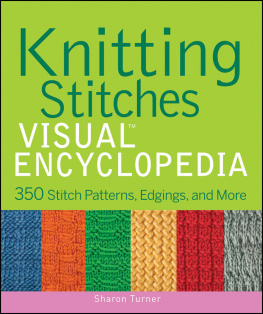
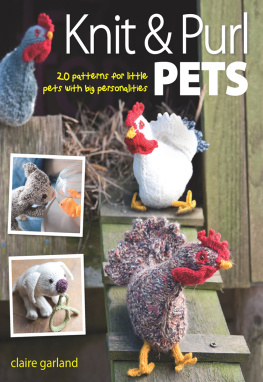
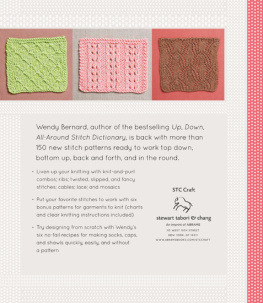
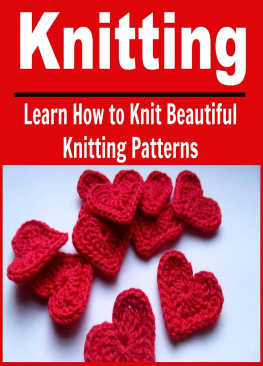
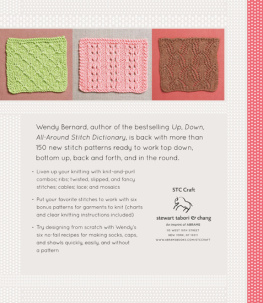
 HERALDIC KNITTING An exquisite example of modern knitting, in fine linen thread, by Paula Granichstadten; showing how variety of stitch, correctly chosen, and thoughtfully designed, can be used to express form of the most complicated nature.
HERALDIC KNITTING An exquisite example of modern knitting, in fine linen thread, by Paula Granichstadten; showing how variety of stitch, correctly chosen, and thoughtfully designed, can be used to express form of the most complicated nature.  MARY THOMASS BOOK OF KNITTING PATTERNS DOVER PUBLICATIONS, INC. NEW YORK Bibliographical Note This Dover edition, first published in 1972, is an unabridged republication of the work originally published in 1943 by Hodder and Stoughton, Ltd., London. It is reprinted by special arrangement with Hodder and Stoughton, Ltd., Warwick Lane, London, E.C.4. International Standard Book NumberISBN-13: 978-0-486-22818-1ISBN-10: 0-486-22818-5Library of Congress Catalog Card Number: 72-188246 Manufactured in the United States by Courier Corporation 22818517 www.doverpublications.com DEDICATED WITH LOVE TO MY CHILDREN GAVRELLE AND RICHARD PREFACE The best periods of Knitting have always occurred when yarns have been scarce or expensive, as the desire for better knowledge of the work is stimulated in order that yarn need not be unduly wasted. The urge to knit is satisfied by making a careful collection of stitches and patterns knitted in Sampler form; and since every work, past-time or hobby must first begin with a collection, so that comparison and selection can be intelligently made, there is no more opportune moment than the present in which to begin this work.
MARY THOMASS BOOK OF KNITTING PATTERNS DOVER PUBLICATIONS, INC. NEW YORK Bibliographical Note This Dover edition, first published in 1972, is an unabridged republication of the work originally published in 1943 by Hodder and Stoughton, Ltd., London. It is reprinted by special arrangement with Hodder and Stoughton, Ltd., Warwick Lane, London, E.C.4. International Standard Book NumberISBN-13: 978-0-486-22818-1ISBN-10: 0-486-22818-5Library of Congress Catalog Card Number: 72-188246 Manufactured in the United States by Courier Corporation 22818517 www.doverpublications.com DEDICATED WITH LOVE TO MY CHILDREN GAVRELLE AND RICHARD PREFACE The best periods of Knitting have always occurred when yarns have been scarce or expensive, as the desire for better knowledge of the work is stimulated in order that yarn need not be unduly wasted. The urge to knit is satisfied by making a careful collection of stitches and patterns knitted in Sampler form; and since every work, past-time or hobby must first begin with a collection, so that comparison and selection can be intelligently made, there is no more opportune moment than the present in which to begin this work.